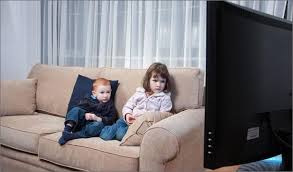I believe parents should limit their children’s screen time. Please see the article “Kids and Video Games”.
Computers
Exposing your young children to limited computer use can have positive outcomes. Children can use text-to-speech programs when learning to write, read interactive books, write e-mails to grandparents, etc. Computer software is also very useful for working with children with special needs and may be the only way children with certain impairments can connect to the world.
NAEYC and the National Education Technology Standards for Students suggest guidelines for computer use. Find programs that avoid stereotypes and violence that are creative, encourage communication, and promote critical thinking skills. It is best if the content relates to a child’s direct experiences and is integrated, interesting, challenging, and open-ended. It should support language development, include various learning styles, involve cooperation, and involve higher level thinking skills than memorization.
How Television, Videos and Certain Software Limit Development
Too much screen time can limit development in many ways. First, TV and videos can deaden imagination. Children who watch a lot of TV can become passive. If they do play, they often just follow a TV script instead of creating their personal script. Researchers Singer and Singer (2005) call this “imitative imagination”. Second, TV and videos expose children to violent and destructive characters and often teach children that resolution of conflict involves violence. Play uses images from life experiences so they play out what they know and if their experience with problem solving is from a violent TV show, they are more likely to imitate the violence when problem solving in play. Third, young children have a very hard time separating fantasy from reality and so TV and videos can be very confusing to the child. Fourth, commercials can turn children into mini-consumers. Robinson (2001) studied eight to ten year old children. When one of the groups studied decreased viewing time, there were 70% fewer requests for toys than those in the control group. Finally, what are children NOT doing when they are watching TV? Socializing, tinkering on a car with their dad, learning to cook, chasing bugs, skipping, hopping, pretending, reading, etc.
It is, therefore, important to limit screen time and be selective about what is watched.
REFERENCE
Van Hoorn, J., Nourot, P. M., Scales, B., & Alward, K. R. (2011). Play at the center of the curriculum. Upper Saddle River, NJ: Pearson.



